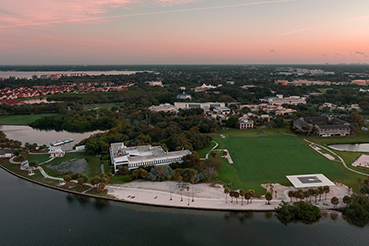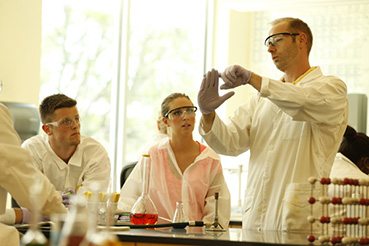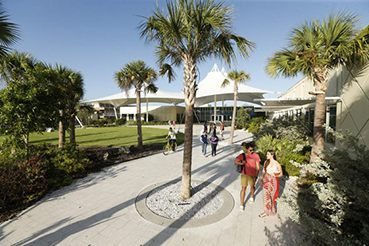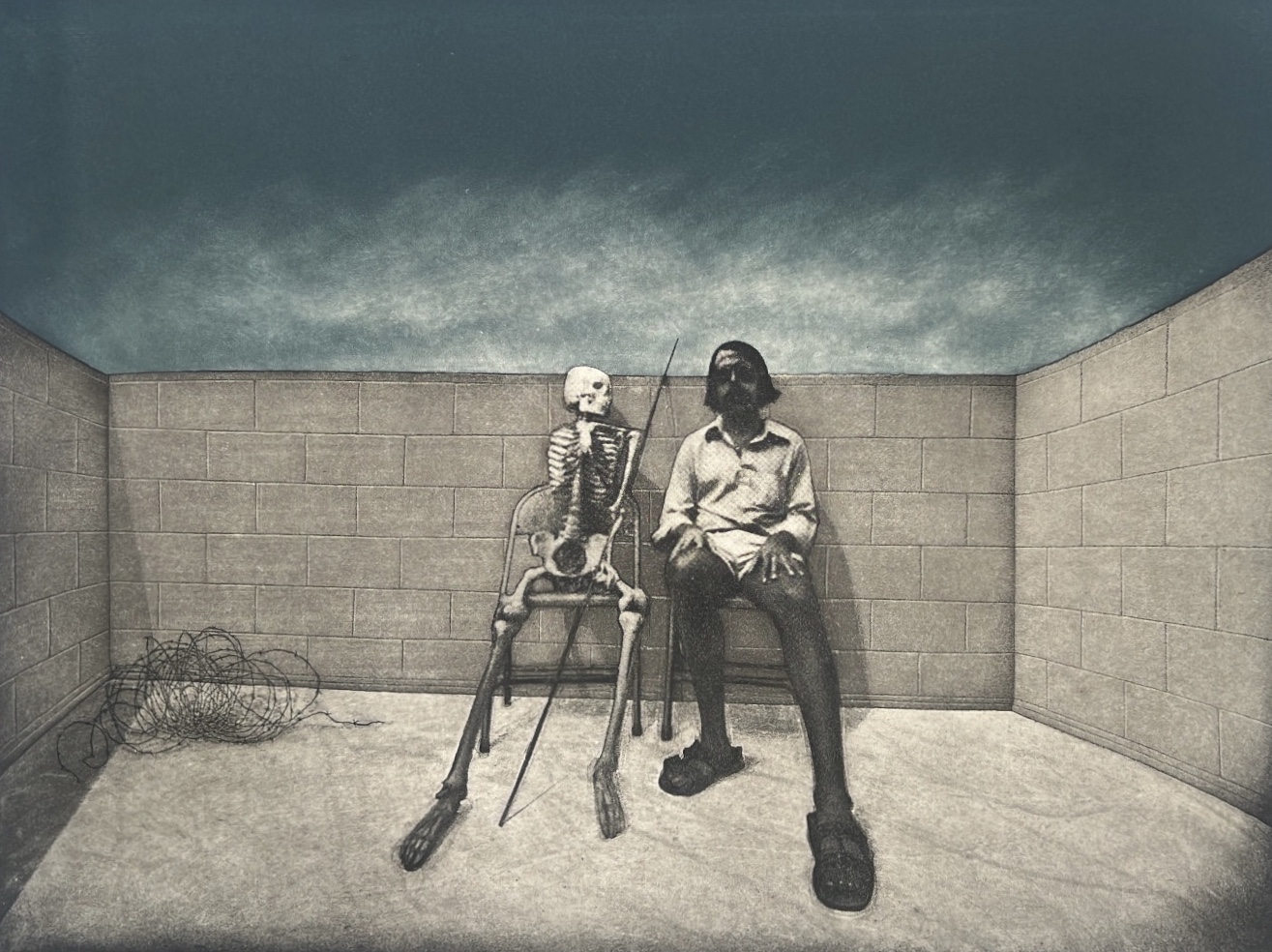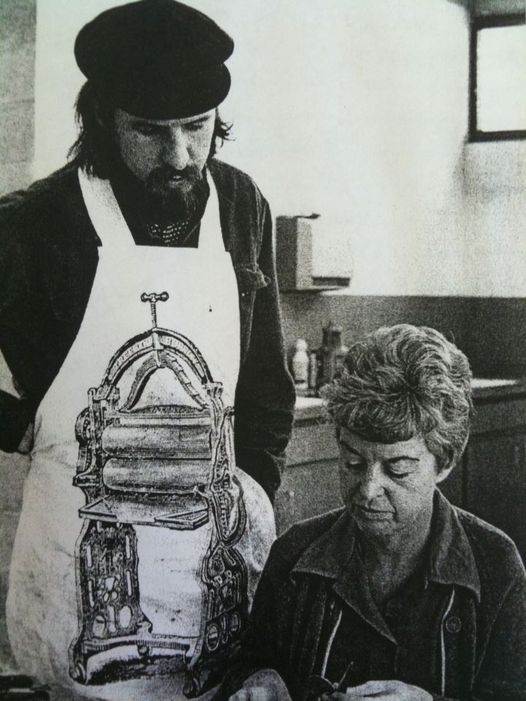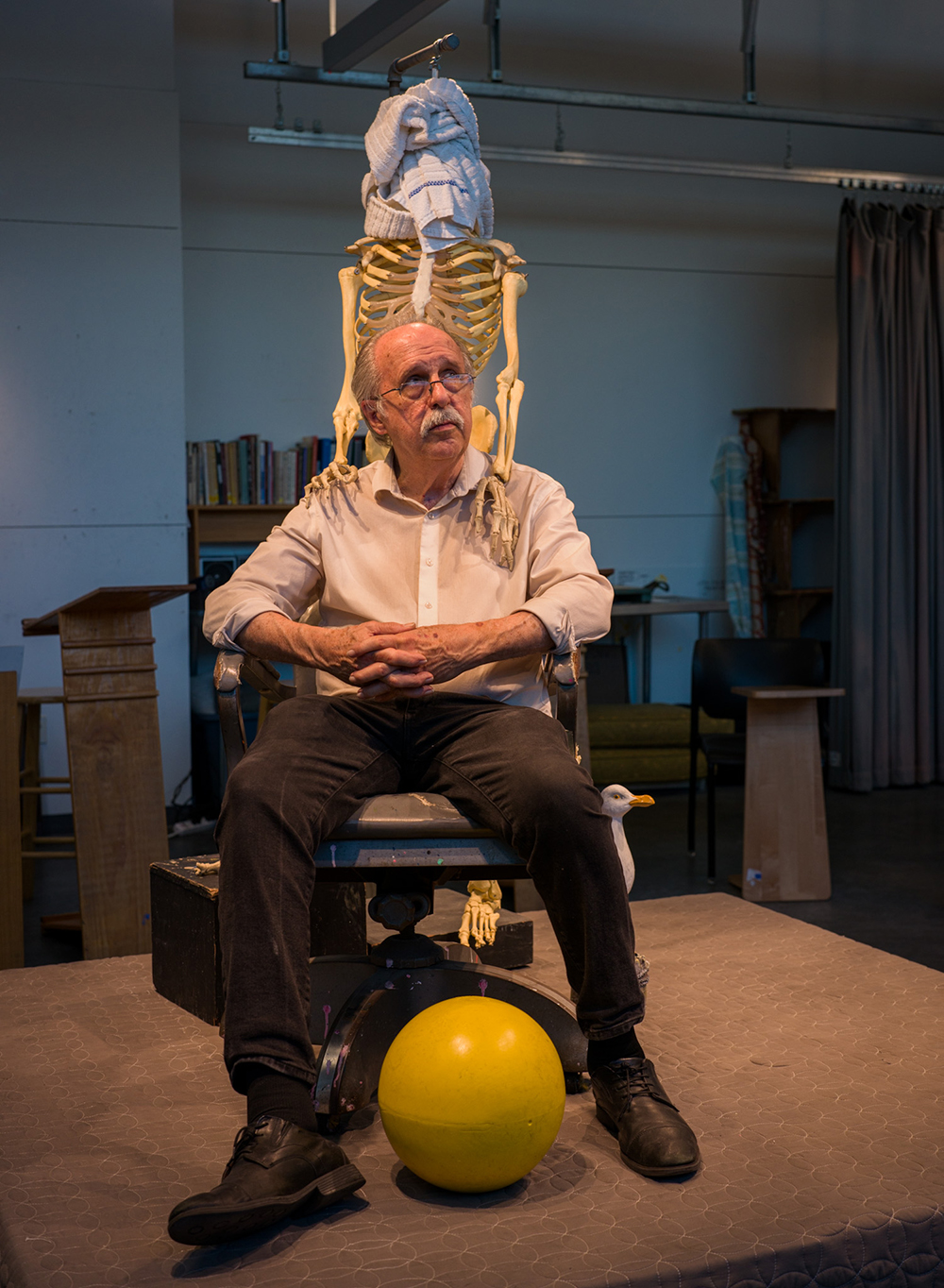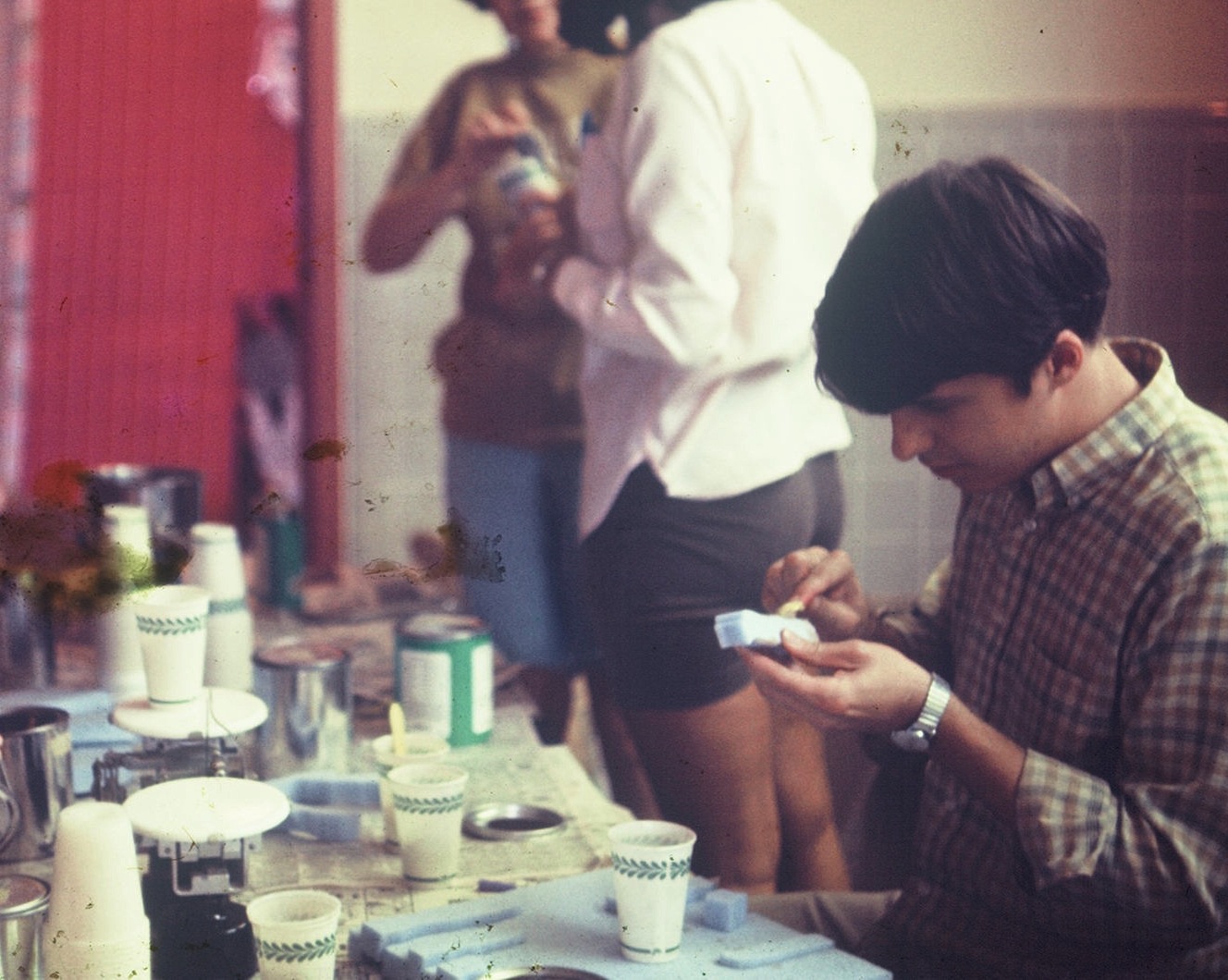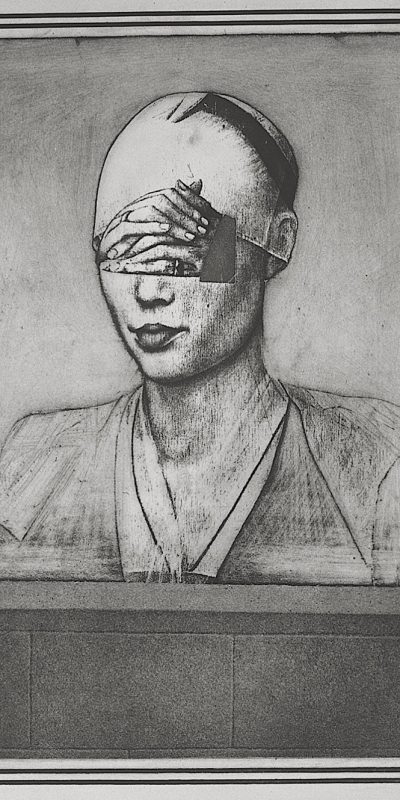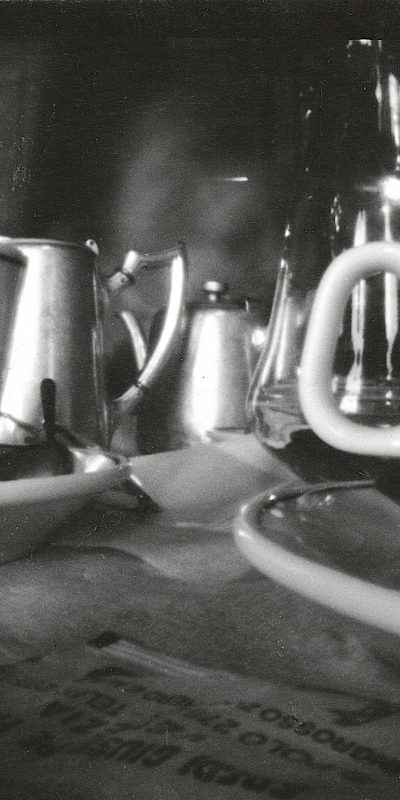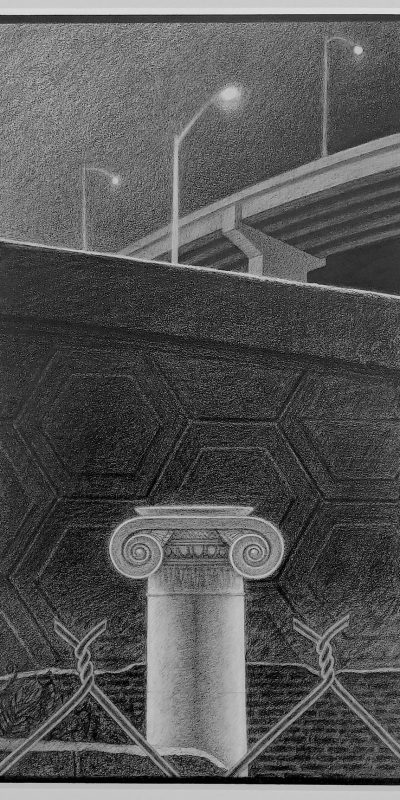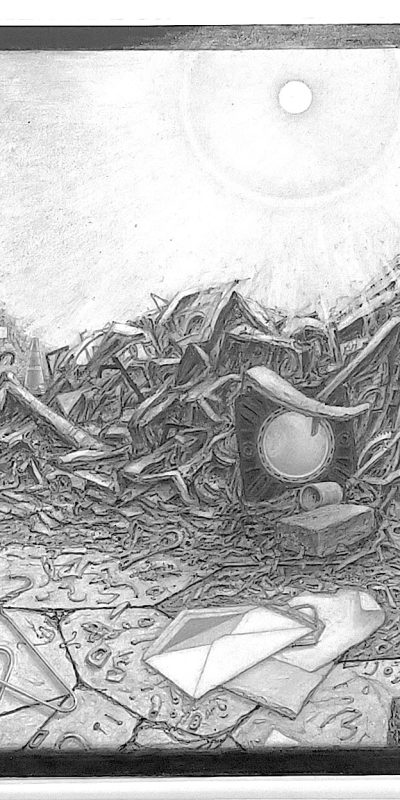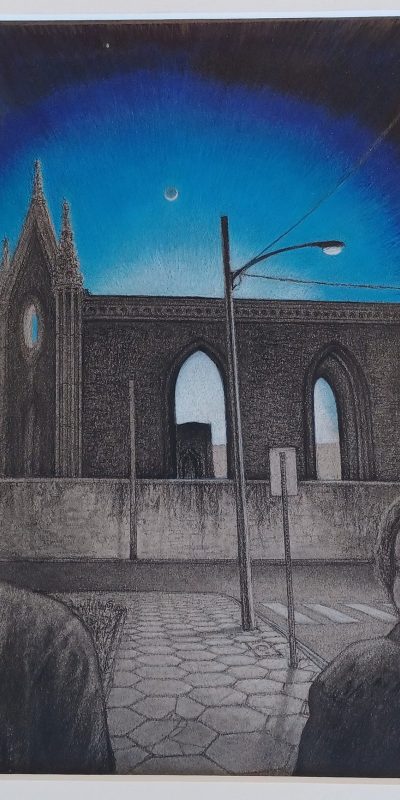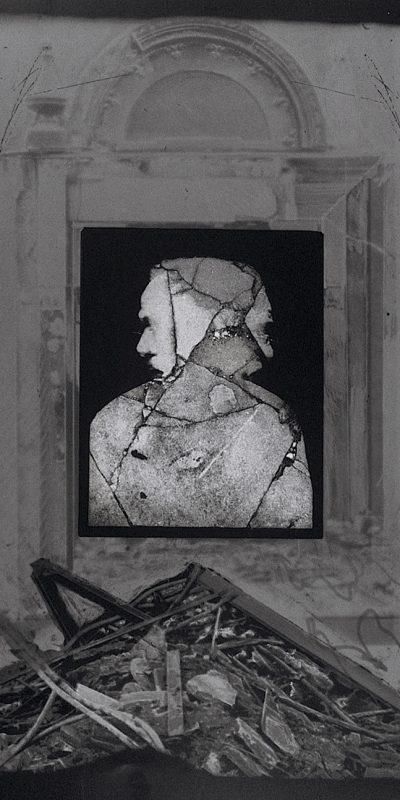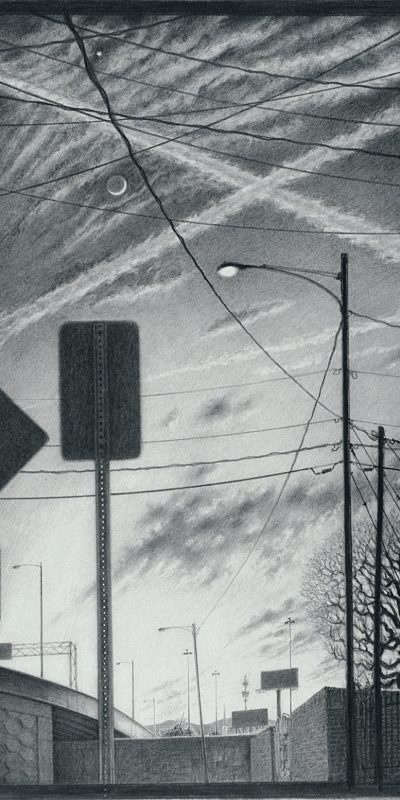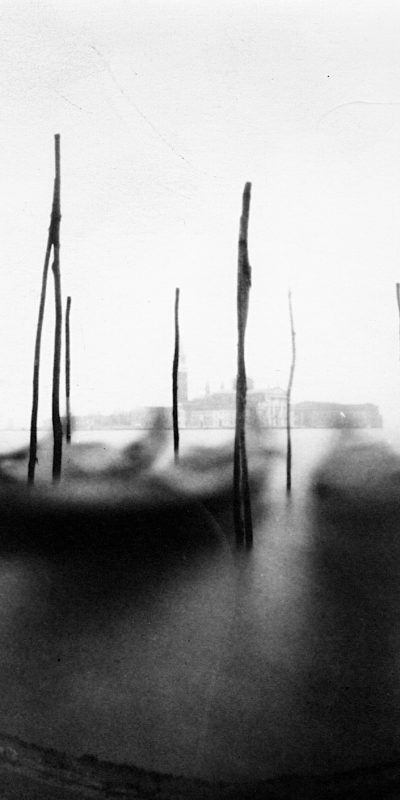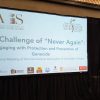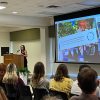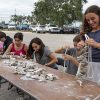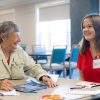Once a Florida Presbyterian/Eckerd College first-year student in the fall of 1968, Professor of Visual Arts Arthur Skinner ’72 is now retiring from his position after nearly 50 years.
Born and raised in Decatur, Georgia, Skinner grew up going to a Presbyterian church. His eldest brother was a professor of English at a Presbyterian college in South Carolina, and Skinner considers him to be his first mentor. His brother had heard good things about Eckerd—which was then named Florida Presbyterian College—so he recommended looking into it.
“I visited, liked what I saw and the palpable energy that I felt when visiting the art department, and here I came,” Skinner says.
Eckerd offers unique three-and-a-half-week short terms, and though first-year students now take an August Autumn Term, that wasn’t the case when Skinner was a student. He took a Winter Term course in 1969 with Professor of Visual Arts Margaret Rigg that focused on sculpture.
“One day we went to a junkyard, and it was raining, and I remember just as we were getting back in the car, I saw a typewriter—a rusty typewriter—and so I grabbed it,” he explains.
Skinner took the typewriter apart and put it back together in different ways by using welding skills the students were learning. He talks about the creative process behind the project and how interesting it was to disassemble the typewriter and reform it to make something new.
“That was transformational for me,” he explains, “because that would inspire other things, to the drawing and painting too,” as he used the imagery of his sculpture to create artwork in other mediums.
Ever since he graduated from the soon-to-be-renamed Eckerd College in 1972, Skinner says art and education have been his goal.
Being on both the student and faculty sides of Eckerd, Skinner—who also was the discipline coordinator and gallery director—feels he owes much to the founding faculty of the Visual Arts Department: Robert Hodgell, Jim Crane and Margaret “Peg” Rigg—all now deceased.
“They were truly special people in my life and helped shape my role both as a teacher and administrator. And in honoring their legacy, I feel that I have been a custodian of their vision for the art department, and in their teaching and mentoring—in the emphasis on the studio program, having semi-private space for our majors to make art 24/7, and in expecting a solo gallery exhibition as a student’s capstone experience,” he says.
One of Skinner’s latest students, Tida Bagby, a visual arts major from Inlet Beach, Florida, took Monotype with him last semester. Monotype explores ways of achieving single-impression images with oil paint, watercolor and printing inks, using an intaglio press and by hand. In reflecting on her experience with the course, dedication is at the forefront of her mind.
Skinner today, posing for a portrait by visual arts graduate Michael Specht ’11 after teaching a Drawing Fundamentals class
Skinner as a student during Winter Term 1969, when the visual arts discipline occupied Gandhi House in the Alpha residence hall complex
“It would have been impossible to improve in this printmaking style without dedicating so much time to practicing it outside of class,” she says, “and Professor Skinner really encouraged us to spend as much time as we could in the print lab to familiarize ourselves with the space, refine our work, and experiment with all of the different mediums and techniques we could use.”
Tida is proud of her work with encaustic monotype techniques from this course, which uses melted wax, not an easy material to manipulate. Once she got the hang of it, this style allowed her to work in a less detail-oriented style and break forms and figures down to their basic shapes and colors.
Tida says it’s been amazing to learn from an artist with vast experience. She not only learned about art-making techniques but also the gallery process through Skinner’s help setting up her Sophomore Show last year. He always had insightful comments about her work, she adds, what’s working and not working and how to continue with her style.
Tida, who is interested in pursuing art in graduate school, says she learned so much and had a great time in Skinner’s class. “I’m definitely going to miss his presence as a professor at Eckerd,” she adds.
Skinner says every class he taught was his favorite, detailing some aspects of them he enjoyed—such as “teaching drawing fundamentals not only as a means of developing visual perception and eye-hand coordination, but also as a means to find one’s personal voice in art,” while “teaching photography as a means of looking at the world.”
Skinner inherited the film photography course Photography as Image Gathering from his dear departed friend and colleague John Eckert ’69 (d. 1987).
The course title conveys an approach to photography that “runs counter to the predatory language we commonly associate with the medium: that of taking, capturing and shooting,” Skinner says.
Instead of taking images, students make them. Instead of capturing, images are gathered.
His favorite particular moment in teaching was making a camera obscura for his students learning pinhole photography, then witnessing their astonishment when entering the darkened chamber and seeing what was outdoors projected onto the interior wall upside down—in color and motion—he says.
He also taught Experimental Photography and led a dozen Winter Term trips to Florence, Venice and Rome between 1978 and 1992 to explore the artistic and historical aspects of Italy.
Skinner, the humble patriarch of an Eckerd College family, is married to Katrina Van Tassel, who graduated in the Eckerd Class of 1980; and their eldest son, William Skinner ’12, is married to Becca Cassidy ’13, while youngest son, Joe Skinner, graduated from Eckerd in 2014.
Though Arthur Skinner has transitioned from Eckerd professor to professor emeritus of visual arts, he’ll stick around campus as the gallery director for at least a couple of years, he says.
When asked what piece of advice he’d give to students who are aspiring artists, he provided several.
“Be your own best critic,” he says. “And should you find yourself at a creative impasse, try working in a different medium and see what happens, or step away from your work and then come back to it and see it with fresh eyes.”
He suggests it’s necessary “to find and develop your voice and skills in art, to be patient and resourceful and professional every step of the way. Presentation matters.”
Also, Skinner adds, “be mindful that the best artists know their art history—so keep learning and be open to discovery.”
His favorite part of being a professor and connecting with students through art was “sharing in the creative journey and advising all along the way.”

